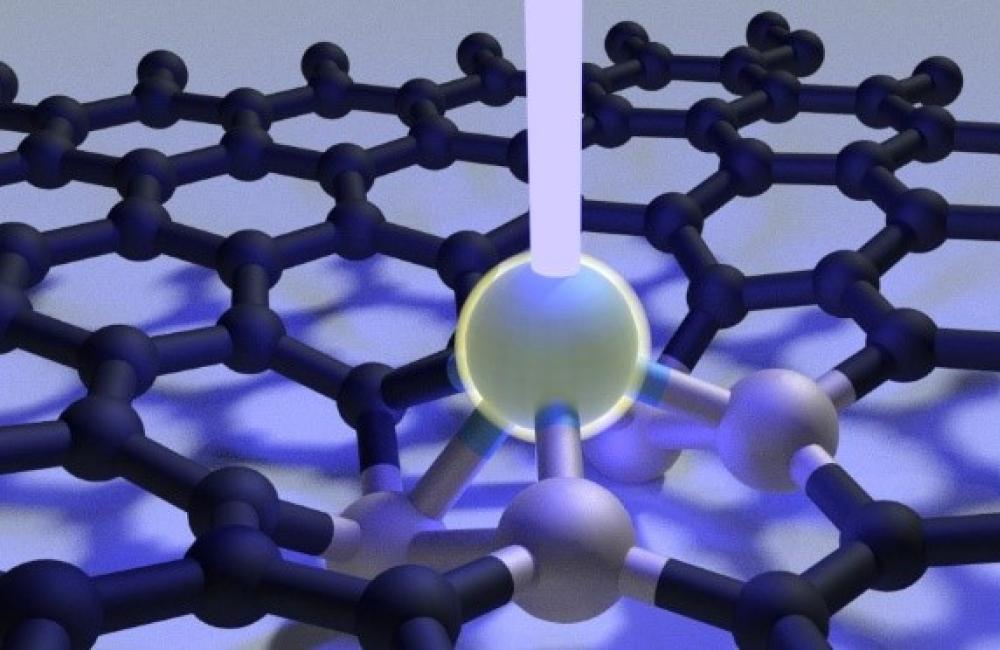
Researchers insert a platinum-silicon molecule into a graphene lattice with a focused electron beam. Credit: Ondrej Dyck/Oak Ridge National Laboratory, U.S. Dept. of Energy
Scientists at Oak Ridge National Laboratory used a focused beam of electrons to stitch platinum-silicon molecules into graphene, marking the first deliberate insertion of artificial molecules into a graphene host matrix.
While scientists have already used the beam of a high-resolution electron microscope to intentionally rearrange graphene's carbon-based molecular structure, this new development greatly enhances scientists' ability to control matter at the atomic scale.
"This technique allows us to insert foreign molecules into the graphene lattice to change its physical properties," said ORNL's Ondrej Dyck.
He explained that this process is generally applicable and could be especially useful for prototyping quantum-based devices - including solid state qubits for quantum computers - from graphene and other ultra-thin materials.
The research was published in Carbon. - Gage Taylor






